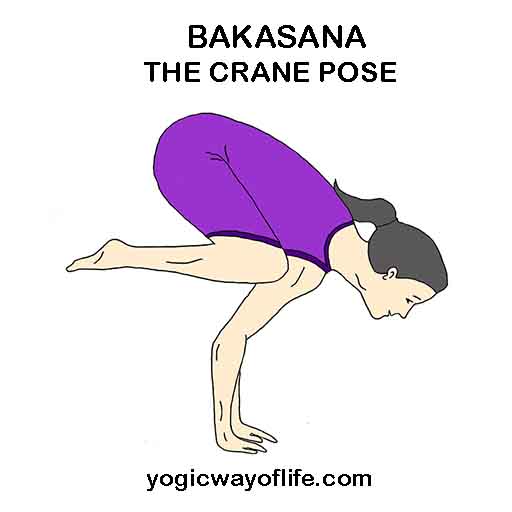Bakasana or the Crane Pose looks like a crane patiently waiting to catch its prey. In Sanskrit, ‘baka’ means ‘crane’ and ‘asana’ means ‘pose’. There are many variations of Bakasana, depicting the crane in various poses. The most popular version that is practiced is called the Baka Dhyanasana which looks like a crane meditating in stillness, concentrating on its prey and waiting for the final kill.
To perform Bakasana, one needs good strength of the wrist, hands and shoulders and a good sense of balance to maintain the position for long. Those with high blood pressure and cerebral thrombosis should avoid this asana.

How to do Bakasana (The Crane Pose)?
- Squat on the floor with legs slightly apart.
- Place the hands on the floor and let the palms feel the floor.
- Raise the heels and balance yourself on the toes.
- Slowly bend forward and shift the weight of the body to the palms.
- Lift yourself up using the palms. The elbows will be bent. Raise yourself up further till the hands are perpendicular to the ground.
- Now the entire weight of the body will rest on the palms and the knees should touch the outside of the hands, just above the elbows.
- Retain the breath in the final position. Maintain this position for as long as possible. Your concentration should be on maintaining the balance of the body.
- To release the pose, return to the initial squatting position and breathe normally.
- Repeat this as many times as you are comfortable.
Benefits of Bakasana (The Crane Pose)
- Bakasana strengthens the wrists, arms and shoulders.
- It improves the sense of balance as it requires sufficient nervous coordination.
- It can remove tension and anxiety.
Contraindications for Bakasana (The Crane Pose)
- Bakasana shoud not be practiced is you have very weak wrists.
- It should be avoided if you have injury of wrist, arms or shoulders.
